

Nicola
What are Inbound Links and how do they help you? - SEOptimer. Table of contents IntroductionWhat are inbound links?

Other types of links Outbound links Internal links Why are inbound links important? Higher rank in search engine results Increased traffic Increased brand awareness Creates a chance for business relationships. 2020 CX: ‘The age of trust’ - Engage CX Marketing. By Claire Sporton, SVP, Customer Experience Innovation, Confirmit Another year’s over and… if you’re like me, it has flown by!
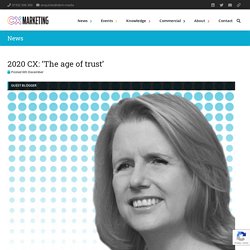
Hopefully you’ve achieved some of last year’s New Year’s resolutions. As our attention turns to a new year and a new decade, it’s clear to me that we are going to have to ‘do better’ in 2020. Why? Because in spite of all our efforts and regardless of investment made in CX programmes, only 12% of consumers feel brands have made significant CX improvements in recent years and only 11% of consumers feel like brands are even doing anything with the feedback they receive. Clearly something is wrong! Not only will we need to move away from chasing metrics and simply gathering more data. How to Boost ROI with Data-Driven Marketing Decisions. We use technology such as cookies on our website, and through our partners, to personalize content and ads, provide social media features, and analyse our traffic.
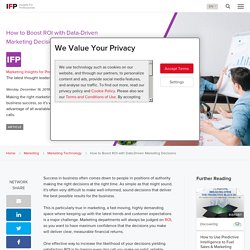
To find out more, read our privacy policy and Cookie Policy. 5 Mistakes Killing Your Marketing Analytics. We use technology such as cookies on our website, and through our partners, to personalize content and ads, provide social media features, and analyse our traffic.
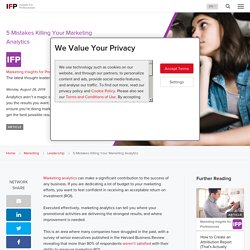
To find out more, read our privacy policy and Cookie Policy. Please also see our Terms and Conditions of Use. Defining UX best practice for shared customer experiences – Econsultancy. For some of the biggest and most considered products and services, the decision to buy doesn’t always come down to a solo customer.

From finance and utilities, to travel, household goods, and entertainment, we often buy (and use) products and services as a couple, family unit, or group of friends. Why then do many of the online systems we use treat customers as solo decision-makers, tying customer accounts to an individual email address and neglecting (or even discouraging) sharing and collaboration? Sharing is caring: the brands doing it right Before I delve into today’s issues and challenges around shared digital experiences, I should acknowledge that there are in fact a few businesses that get this right. - Bissantz'Numbers – Typografische Skalierung von Zahlen. We need to talk about digital dashboards – Econsultancy.
In the last few months, I’ve noticed a trend emerging at the analytics meetups and events I attend.
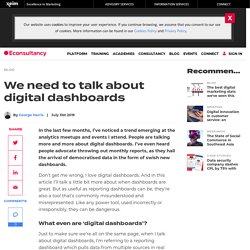
People are talking more and more about digital dashboards. I’ve even heard people advocate throwing out monthly reports, as they hail the arrival of democratised data in the form of swish new dashboards. Don’t get me wrong, I love digital dashboards. And in this article I’ll talk a little bit more about when dashboards are great. Creating Facebook Insights Data Studio Dashboards: The Ultimate Guide. 15-MINUTE READ · By Anna Shutko.
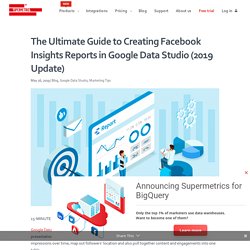
Google Data Studio is an excellent tool to visualise marketing data. It has all you need for successful presentation and analysis: you can illustrate key metrics with the scorecards, build trendlines of changes in, e.g. impressions over time, map out followers’ location and also pull together content and engagements into one table. This article is your heavy artillery for a successful Facebook Pages’ analysis and reporting in Data Studio. What Is Remarketing? How Remarketing Works to Increase Leads and Sales.
10 Remarketing Facts that Will Make You Rethink PPC. Hey you guys!
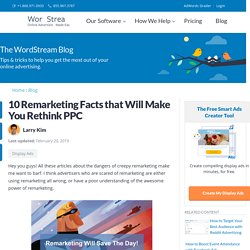
All these articles about the dangers of creepy remarketing make me want to barf. I think advertisers who are scared of remarketing are either using remarketing all wrong, or have a poor understanding of the awesome power of remarketing. I’ve been using remarketing at WordStream since 2012 and last year, we spent over $500,000 on these ads alone. Why? Because they’re freaking awesome. If you’re sitting on the fence and unsure about giving it a try, I’m going to give you a swift kick in the right direction with these 10 remarketing facts that will make you rethink your entire PPC marketing strategy. 1. Remarketing naysayers preach being very conservative with impression frequency caps and membership duration to avoid offending potential customers. Wrong. We’ve found that conversion rates actually increase the more users see an ad within remarketing campaigns.
Understand that people are busy and have other stuff going on in their life. 2. How Does Google Remarketing Work? What Is Remarketing?
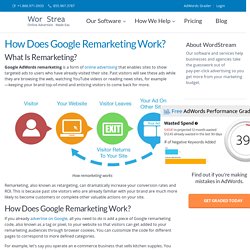
Google AdWords remarketing is a form of online advertising that enables sites to show targeted ads to users who have already visited their site. Past visitors will see these ads while they are browsing the web, watching YouTube videos or reading news sites, for example—keeping your brand top-of-mind and enticing visitors to come back for more. How remarketing works Remarketing, also known as retargeting, can dramatically increase your conversion rates and ROI.
This is because past site visitors who are already familiar with your brand are much more likely to become customers or complete other valuable actions on your site. How Does Google Remarketing Work? If you already advertise on Google, all you need to do is add a piece of Google remarketing code, also known as a tag or pixel, to your website so that visitors can get added to your remarketing audiences through browser cookies. For example, let's say you operate an e-commerce business that sells kitchen supples.
Data Science. The Benefits of Personalisation as Shown by Seven Statistics. Website and email personalisation is a core part of providing an outstanding customer experience.

When a brand offers experiences tailored to each consumer’s specific needs, they are more likely to continue their journey with that brand. And yet, not every brand is taking advantage of this trend—according to Econsultancy, 38 percent of companies are not undertaking any personalisation. This is, in part, due to a lack of investment in personalisation technology. If you are considering investing in personalisation tools for your company, equipping yourself with some key statistics can help you judge the sort of return on investment you can expect. In this blog post we explore seven reasons why personalisation is important, supported by figures taken from industry research. 1) Website personalisation increases conversion rates When you tailor content to a specific target audience based on their behaviour, or demographics, your message is much more persuasive. 7) Personalisation builds loyalty.
Marketing technology. Search and web analytics. Web coding and best practice. SEO & SEM. User Experience (UX) testing. Google Drive. Social Media Channels. Marketing Communications. Web design. Book news, recommendations, blogs.